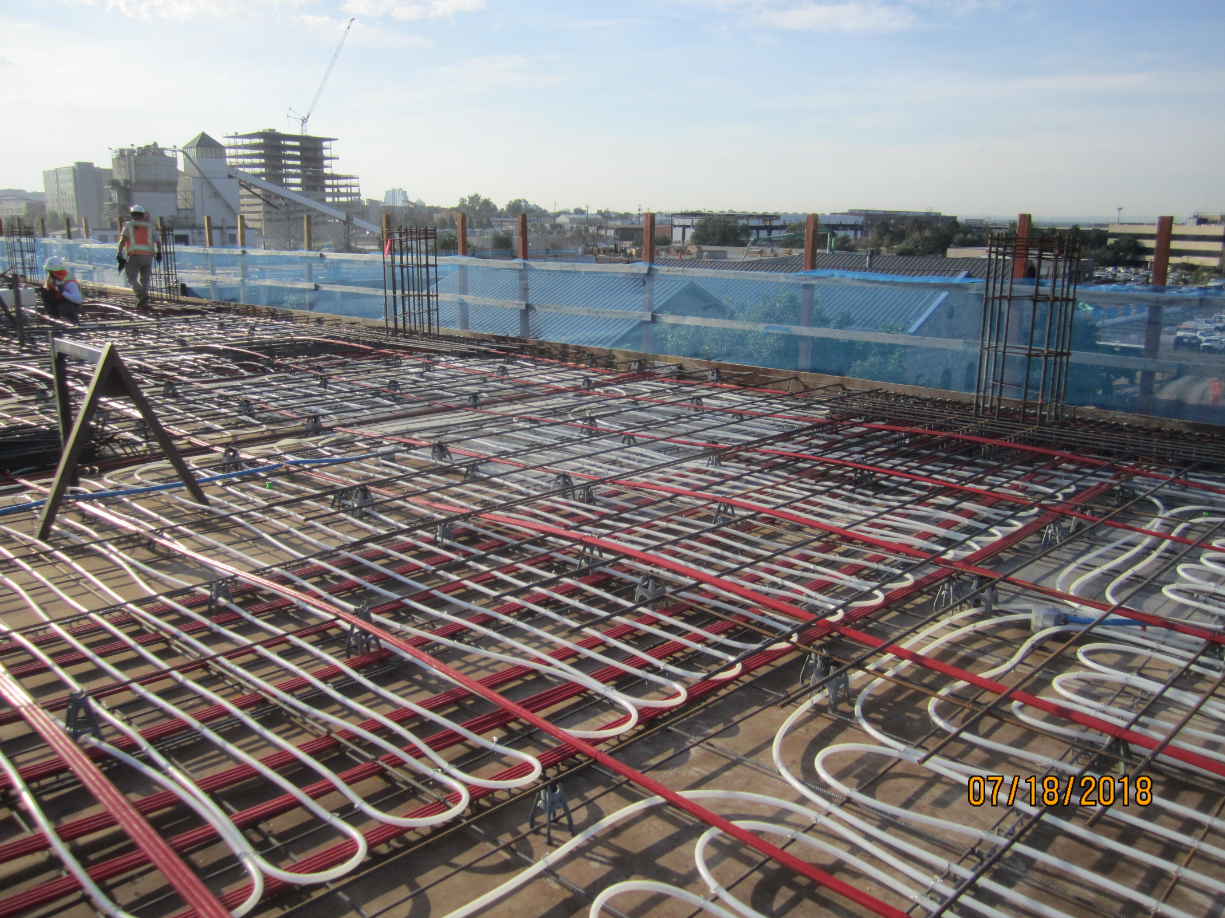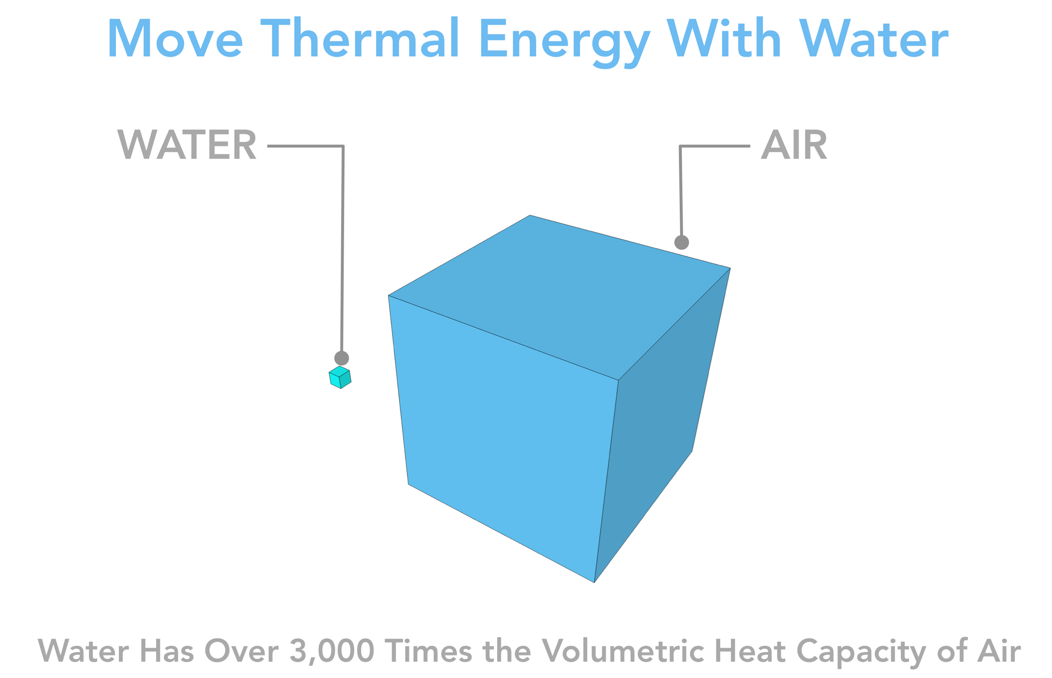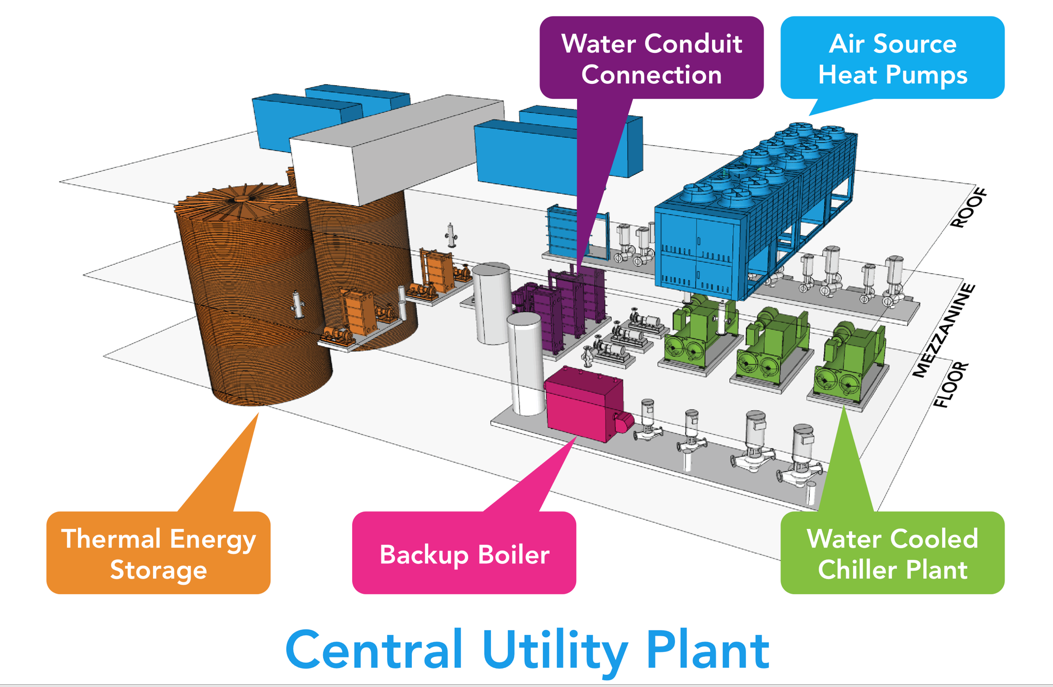
Doing right by the climate — on the inside and out
Some of the greenest features of Denver Water’s new Administration Building are easy to see — the solar panels over the parking areas and the building’s roof as well as part of the wastewater recycling system’s filtering plants in the lobby.
But one of the most environmentally advanced designs is largely invisible: the radiant heating and cooling system that keeps the building, as well as four other new facilities at the complex, temperate and comfortable year-round.
“The project is leaps and bounds ahead of your average building getting built in Colorado,” said Ken Urbanek, a mechanical engineer at IMEG Corp. deeply involved in designing the climate control system in the new buildings at Denver Water’s redeveloped 35-acre complex.
While most homes and buildings depend on conventional “forced air” heating and cooling systems — think of warmed air from a furnace being pushed through ducts and vents — Denver Water’s system uses a far more efficient design.
This one depends heavily on water at different temperatures sent through a vast array of plastic tubing embedded in the building’s concrete slabs. Water, it turns out, is far better than air at moving around large amounts of energy.
Adjusting the temperature of the water, often by using energy captured from other activities at the complex is enough to keep things cozy in the winter and cool during summertime. One simple example: areas along the Administration Building’s southern exposure often have excess heat useful in this process.
The leading-edge approach is yet another example of Denver Water’s commitment to sustainability through cutting waste, conserving water, reducing carbon emissions and incorporating green energy and energy efficiency into its operations.
“Clean, safe water for our customers depends on safeguarding our environment,” said Kate Taft, sustainability manager for Denver Water. “Using energy efficiently, as we’re doing to heat and cool our headquarters, is another example of our commitment to environmental stewardship.”
Denver Water’s radiant heating/cooling system was key to several buildings within the Operations Complex Redevelopment project earning various levels of LEED certification, which recognizes sustainability in building design, construction and operation.
It’s part of why the Administration Building is 30 to 50% more energy efficient than more conventional construction. Its radiant system largely avoids the need to burn natural gas to heat air and use electricity from the grid to run air conditioning units, as a more typical building might do.
Other key features of the system include:
- The ability to move energy around the complex where it’s needed. Four pipes carrying chilled and hot water go to most of the buildings. Buildings that generate excess heating or cooling can be used to balance each other.
- The use of the Central Utility Plant, located in the Trades Shop, to calibrate water temperatures. The plant uses heat pumps that can take low-grade energy recovered from one part of the complex and turn it into usable energy elsewhere.
- The heat pumps use free energy by absorbing heat from the surrounding air and combine it with small amounts of traditionally generated energy to create hot water. In the summer, the process can work in reverse to create cooling effects.
- The central plant can tap into one of Denver Water’s large pipes carrying fresh water from the mountains and make use of our own water supply. When a building on the complex needs mostly cooling, the water in the pipe is still so chilly from mountain snowmelt, even deep into summer, that it can help reduce the temperature in a building.
“The free energy is where the Denver Water complex distinguishes itself from any other project in the U.S.,” Urbanek said, emphasizing how the project takes advantages of hot and cold in different areas to deliver what’s needed to different buildings. Even the data center located adjacent to the Trades Shop contributes with excess heat that can be useful, he said.
Other elements contributing to the ease of heating and cooling the building include highly efficient insulation, efficient lighting, a tight building envelope that reduces air leakage. There also are windows that help regulate penetration of heat and cold and shading that reduces solar glare and window blinds that respond to changing sunlight.
“At every corner,” Urbanek said, “you will most likely find something that was specifically engineered a certain way to enhance complex sustainability.”



